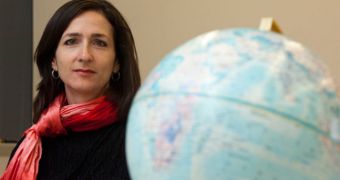Experts at the Massachusetts Institute of Technology (MIT) argue that the hardest stage in determining whether astronomers indeed found a twin Earth exoplanet would be confirming that the place is indeed habitable. There are many factors that need to be considered when making such a decision.
The discovery of the exoplanet Gliese 581g this September has kick-started a whole series of arguments, controversies and related studies, all of which seek to determine whether a) the planet exists and b) is habitable.
Some of the things the exoplanet has going for it include being located in its parent star's habitable zone, featuring temperature ranges that allow for the existence of liquid water, and having a mass and size relatively similar to that of our own planet's.
On the other hand, Venus has the same approximate mass, shape and size as Earth, and it's not like anything could survive on its scorching surface. Confirming the habitability of a newly-found planet therefore presents itself as the greatest challenge facing astronomers and planetary scientists.
According to the MIT group, led by Sara Seager, the best way to go about confirming or infirming planetary habitability is studying the object's atmosphere. This is Seager's area of expertise.
She holds joint appointments, as the Ellen Swallow Richards Professor of Planetary Science at the MIT Department of Earth, Atmospheric and Planetary Sciences, and as a professor of physics.
Over the last 15 years, she has been pioneering the study of exoplanetary atmosphere, which made her a worldwide-renowned authority in the field. Seager says that studying the atmospheres of large planets of the “hot Jupiter” class holds clues of how to go about doing the same for smaller planets.
“We are just testing the waters, because we are only now getting the data and practicing how to interpret that data,” she argues, referring to the study of super-Earth planets, which are up to 10 times the mass of Earth.
“I look to these planets as practice cases for when we find the Earths, which is important, because a lot of the time with exoplanets, things are different from what you’d expect,” the expert goes on to say.
Preparing for the inevitable discovery of an Earth-analog planet is important, the MIT team believes, while at the same time admitting that the discovery may still be years away.
Over the past 20 years, more than 500 exoplanets have been found, yet only Gliese 581g meets at least some of the conditions needed for it to be declared habitable.
The rest are large, gaseous giants, that are either too hot or too cold for life as we know it to endure them. Most are either so close to their stars that they become tidally locked, or located so far away that they experience mean temperatures of hundreds of degrees below zero.

 14 DAY TRIAL //
14 DAY TRIAL //